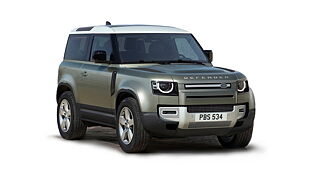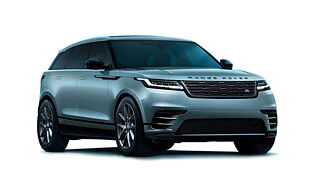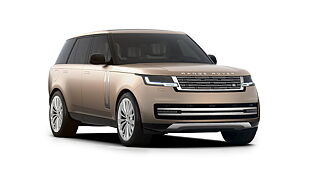What is it?

Replacement for the Land Rover Freelander 2. The most affordable Land Rover. Challenger to the Audi Q5 and the BMW X3. Call it what you will. But to us, the Discovery Sport seems to be all the car you might ever need. It is good-looking in the same way the Evoque was, only this one looks like something men can drive as well. It has the space, comfort, safety and practicality to be the ideal family car. And, it has the hardware to take you above and beyond (sorry, but I just couldn’t resist). Now, the details.
How is it on the inside?

Refreshing, especially for its class of cars. The German’s approach to luxury includes wood and busy layouts; high-tech screens and complicated multi-media systems. Land Rover, though, goes for warmth, simplicity and functionality. And the Discovery Sport’s interiors are exactly that. With easy to read and use controls, blocky and clean-cut dash design, and subtle colours and highlights, you know this one isn’t about bling; it’s about purpose.
We love the driving position, the excellent visibility all round and the space, including that for the luggage. Land Rover has got the seats spot on too. These aren’t cushy but are large, supportive and well designed to keep you comfortable over long hours of travel, and this is true for both front and rear. Additionally, the rear ones can recline, and slide fore and aft further adding to creature comfort.

This here is the lesser powerful 148bhp, TD4, five-seater version and it is available in three trims – S, SE and HSE. But all three get Land Rover’s signature elements like hill descent, roll over and stability control systems besides Terrain Response as standard fitment. This apart, the S trim is pretty basic and doesn’t even get a two-zone climate control system. The SE, with two-zone AC, parking sensors and split rear seats and not to mention automatic headlamps, rain sensing wipers and a panoramic sunroof, is much better specced.
Our test car, however, is the HSE version. With a rear view camera, 8-way adjustable front power seats, keyless entry and start, leather upholstery and something called perpendicular park assist over and above what one gets in the SE trim, this one has a high pamper co-efficient. But, it also takes the TD4 very close to the likes of the X3 and the Q5 in terms of pricing. The HSE TD4 costs Rs 55.7 lakh ex-showroom.

How does it drive?

It is an SUV – and a capable one at that mind – but thanks to the use of aluminium for its panels and some bits of the suspension, it feels tauter, lighter and more manageable than a traditional SUV. It feels more like driving a large, tall car with a numb steering. Even so, tucking the nose in under hard braking or chucking it hard into corners or trying lift-off oversteer aren’t games you want to play in the Discovery Sport.
Keep things sensible and smooth, however, and the Sport rewards you with its precise, stable and enjoyable handling, if only for an SUV. It rolls but never enough to make you shift in your seat. Grip levels are good too, courtesy Land Rover’s smart all-wheel drive system.
But, yes, unlike its more expensive cousin the Jaguar F-Pace, which according to one Mr Ian Callum is an SUV with the soul of a sports car, the Discovery has the heart, mind and soul of an SUV. And we love it for that.

It’s great for inter-city travel (with it being rock solid in a straight line, no matter what speed or surface) or to spend time pondering over board meetings while the chauffeur battles rush hour traffic. But, it’s only when the going gets slushy, sandy or grassy that the Discovery Sport comes into its own.
The Terrain Response System seems to have a cure for nearly every road condition on earth. Gravel, snow, grass, mud, ruts or sand, press a button, ease into the seat, and get tapping on that throttle. Soon enough leisure off-roading turns into child’s play.
The drivetrain impresses too. The 2.2-litre, four-cylinder, diesel, isn’t the most refined or powerful, and on its own, it isn’t a match for the BMW or Audi engines. But, the quick-shifting, seamless and efficient 9-speed automatic box, masks the engine’s shortcomings beautifully. It’s only when you rush the engine do its chinks start to show.
Where the Sport fails to impress, though, is the way it rides. We won’t call it uncomfortable, but it is anything but cosseting. It crashes into bigger potholes, jiggles over road joints and no matter how smooth the surface; it never rides with the pliancy expected of a luxury automobile.
Should I buy one?

Yes. I know I would. It’s luxurious, solidly built, good to drive and spacious. But, mostly, it can go anywhere. Across the parking lot and all the way into the Sahara, it can do it all. Okay, we didn’t go crossing deserts in it, but we tried rocks, slush and ruts, and the Discovery Sport did it all, without a bother. And it looks good doing it - rich and adventurous at the same time. How can one not want such a car?
Where does it fit in?

This, the 148bhp version doesn’t go head-to-head with its conventional competitors like BMW X3 and the Audi Q5 considering that Land Rover’s figures for both power output and price are significantly lower. It is the 188bhp, 5+2 version of the Discovery Sport that’s more in the Audi and BMW’s league. But, that’s a story for another day.
Pics: Ameya Dandekar

![Land Rover Discovery Sport [2015-2017] Exterior Land Rover Discovery Sport [2015-2017] Exterior](https://imgd.aeplcdn.com/642x361/cw/ec/20171/Land-Rover-Discovery-Sport-Exterior-57508.jpg?v=201711021421&wm=1&q=80)
![Land Rover Discovery Sport [2015-2017] Exterior Land Rover Discovery Sport [2015-2017] Exterior](https://imgd.aeplcdn.com/642x361/cw/ec/20171/Land-Rover-Discovery-Sport-Exterior-57509.jpg?v=201711021421&wm=1&q=80)
![Land Rover Discovery Sport [2015-2017] Exterior Land Rover Discovery Sport [2015-2017] Exterior](https://imgd.aeplcdn.com/642x361/cw/ec/20171/Land-Rover-Discovery-Sport-Exterior-57510.jpg?v=201711021421&wm=1&q=80)
![Land Rover Discovery Sport [2015-2017] Exterior Land Rover Discovery Sport [2015-2017] Exterior](https://imgd.aeplcdn.com/642x361/cw/ec/20171/Land-Rover-Discovery-Sport-Exterior-57511.jpg?v=201711021421&wm=1&q=80)
![Land Rover Discovery Sport [2015-2017] Exterior Land Rover Discovery Sport [2015-2017] Exterior](https://imgd.aeplcdn.com/642x361/cw/ec/20171/Land-Rover-Discovery-Sport-Exterior-57512.jpg?v=201711021421&wm=1&q=80)
![Land Rover Discovery Sport [2015-2017] Exterior Land Rover Discovery Sport [2015-2017] Exterior](https://imgd.aeplcdn.com/642x361/cw/ec/20171/Land-Rover-Discovery-Sport-Exterior-57513.jpg?v=201711021421&wm=1&q=80)
![Land Rover Discovery Sport [2015-2017] Interior Land Rover Discovery Sport [2015-2017] Interior](https://imgd.aeplcdn.com/642x361/cw/ec/20171/Land-Rover-Discovery-Sport-Interior-57514.jpg?v=201711021421&wm=1&q=80)
![Land Rover Discovery Sport [2015-2017] Interior Land Rover Discovery Sport [2015-2017] Interior](https://imgd.aeplcdn.com/642x361/cw/ec/20171/Land-Rover-Discovery-Sport-Interior-57515.jpg?v=201711021421&wm=1&q=80)
![Land Rover Discovery Sport [2015-2017] Image Land Rover Discovery Sport [2015-2017] Image](https://imgd.aeplcdn.com/272x153/cw/ec/19806/Land-Rover-Discovery-Sport-Right-Front-Three-Quarter-56684.jpg?wm=0&q=80)
























